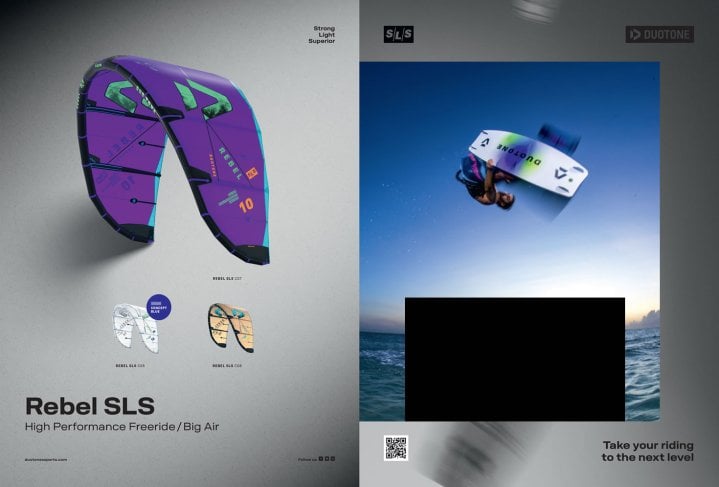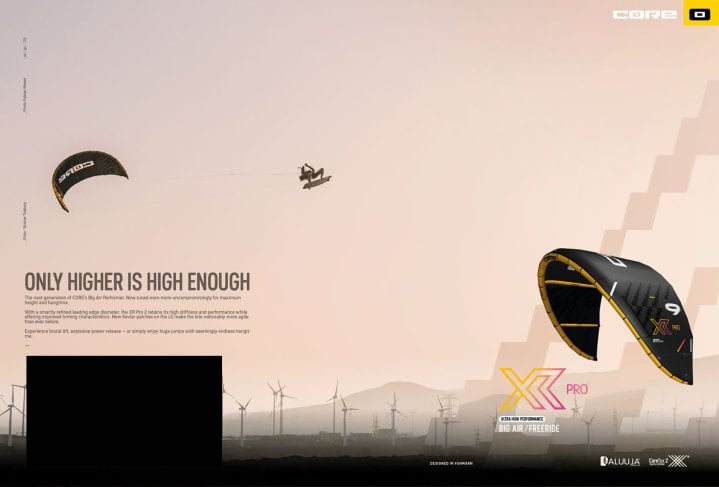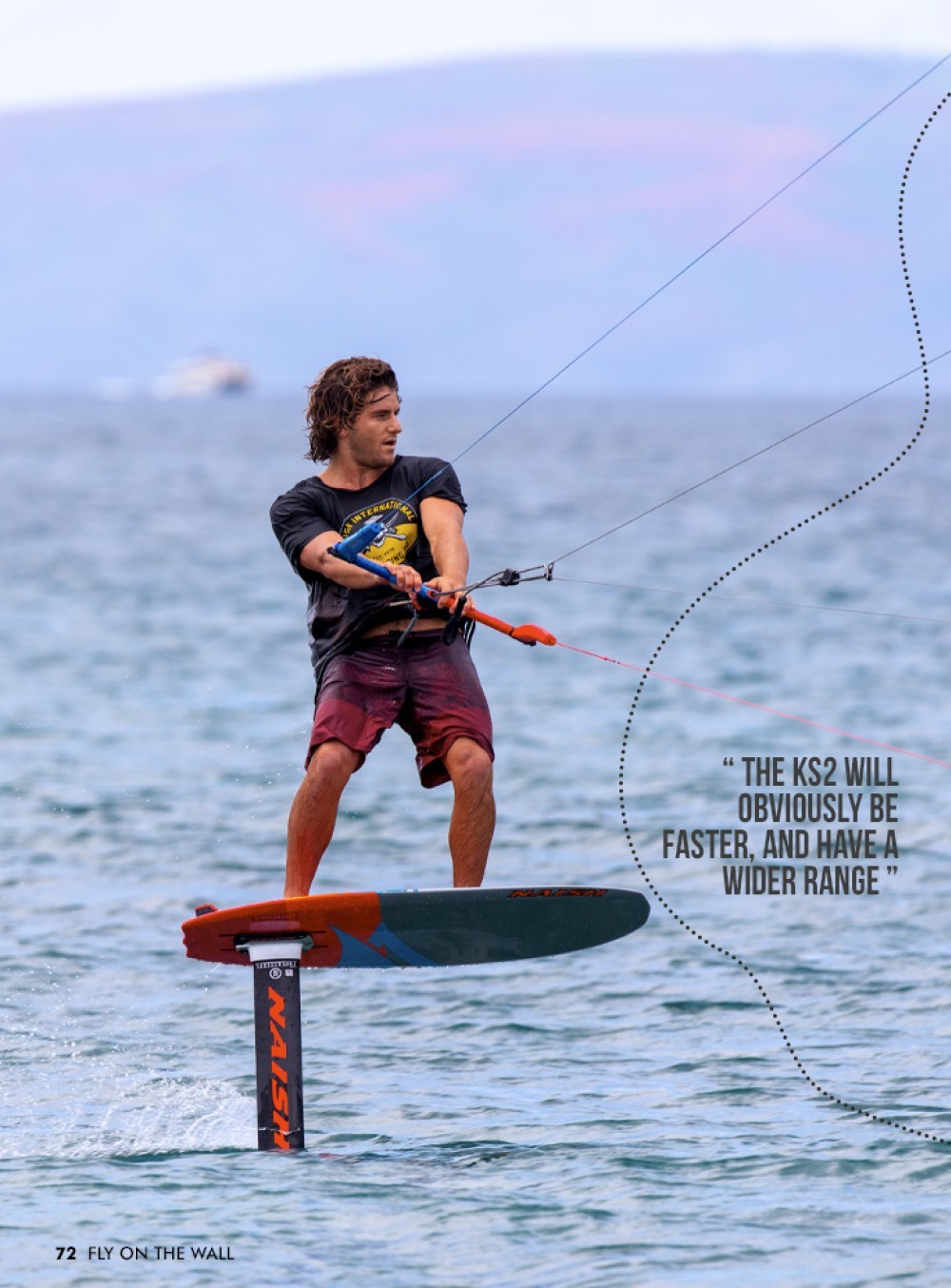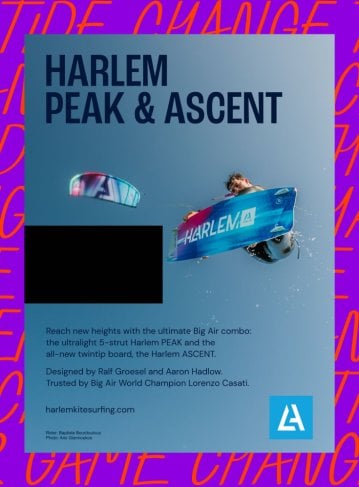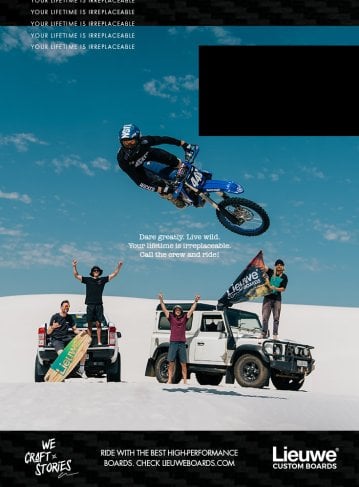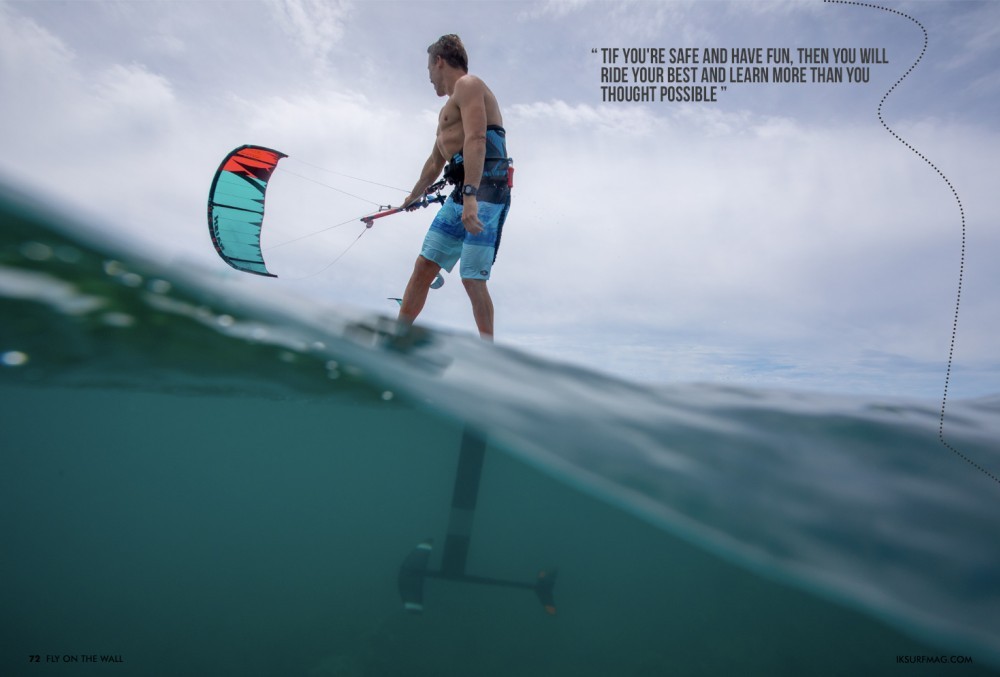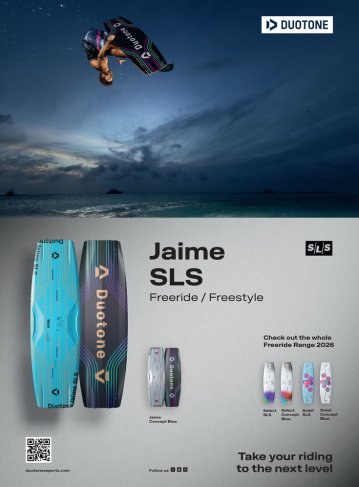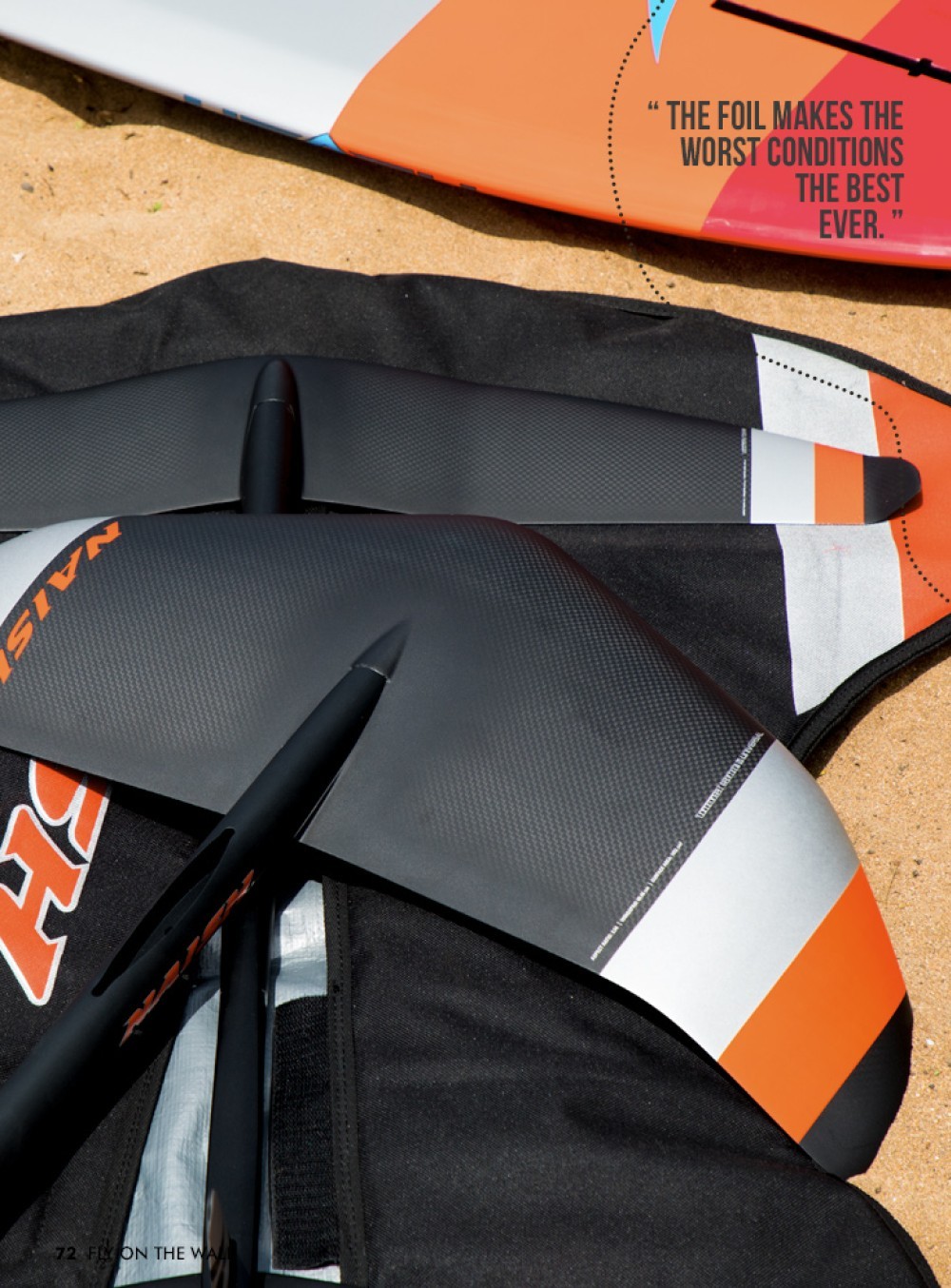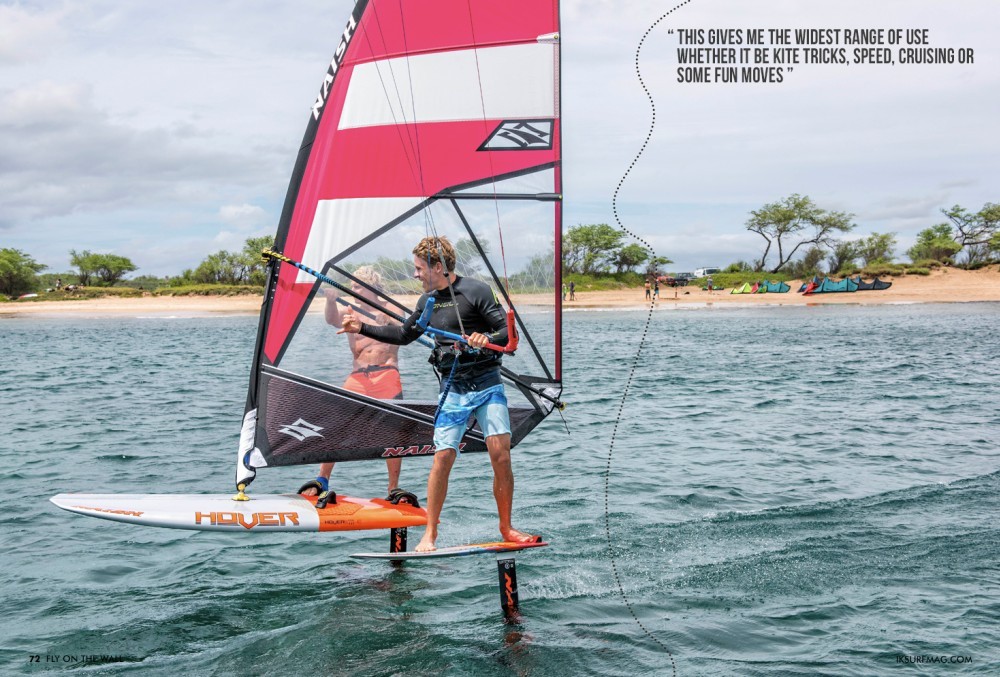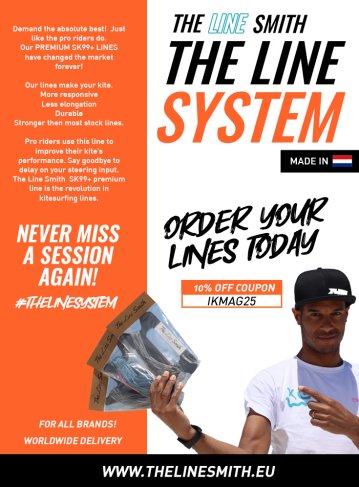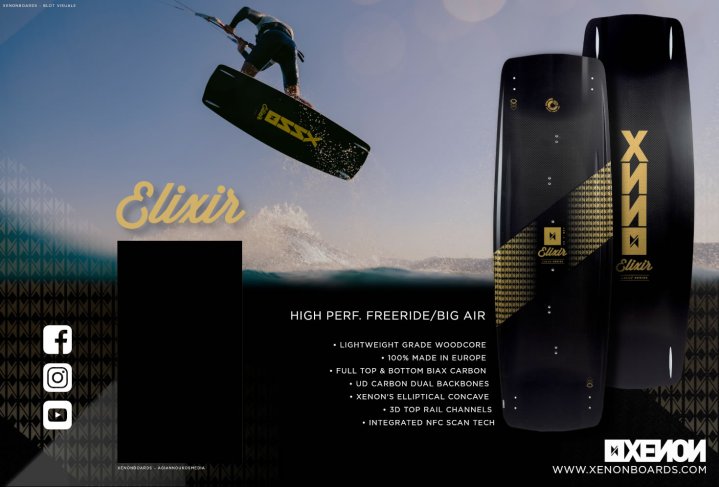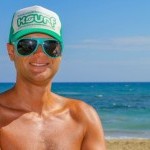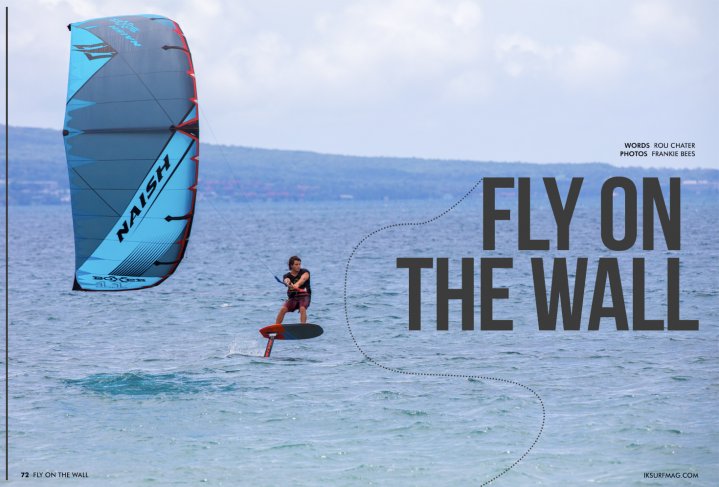
Fly On The Wall
Issue 72 / Mon 10th Dec, 2018
Hydrofoiling has come a long way, and with the advent of surf foils the sizes and shapes of wings on offer is immense, but which wing is right for you? Rou Chater offers his thoughts along with some of the Naish pro team.
Hydrofoils have come a long way in the last few years, as kiters, we have different needs to some of the other sports that are joining the hydrofoil revolution! Surf wings are traditionally thick and wide with a deep profile and chord depth to offer maximum lift at low take-off speeds. Race wings for kite foiling often resemble a 30cm ruler that you used to take to school, or perhaps still do. Between these two extremes, there is just about every shape imaginable.
So what is right for you?
Well, it really depends on your level and what you want to do, if you are learning then a bigger, easier to ride foil will make a real difference to your learning curve. I was in Sardinia this year, and I rode a kiteboard with a SUP wing underneath it. Walking to the water, I felt this would be a terrible combination as I’m more used to racier foil shapes for kiting.
How wrong could I be! The SUP wing generated so much lift and was so stable, you could make mistakes with your feet, and the foil wouldn’t spit you out the front door. Slowing down on a gybe, no problem, this wing was seemingly floating underwater, never wanting to lose lift. The revelation was evident, as kiters we have the advantage of the lift of the kite, but equally, we can use a massive range of foils for different purposes.
For sure the SUP wing was slow, it topped out at about 19 knots, but it was incredibly good fun to ride. These days I pan my foiling around what I want to do on the water. If I’m looking to cover some distance, then the freeride or race foil comes out. If I want to just work on tricks and turns and having fun in a small area, the SUP wing goes on the bottom. The SUP wing also works great in the waves too, it’s slower and allows you to keep the power from the wave, rather than running out in front of it!
We were on the beach recently with some of the Naish crew and decided to ask them what their favourite set up for foiling was. Remember, your setup needs to be personal to you, your level and how you want to ride!
Nils Rosenblad, Naish Designer:
Because kites produce their own vertical lift, there is a vast range of wing designs that will work since wing lift is less critical. The key considerations when deciding between a surf wing and the KS2 for kiteboarding are as follows:
Performance: The KS2 will obviously be faster, and have a wider range, (especially at speed, where it is much easier to control). However, the surf wing with its greater lift will both take off earlier and allow you to use a smaller kite.
Stability: The KS2 will have a much smoother, more 'locked in' feel in a straight line, whereas the Surf - that is specifically designed to mimic the response of a shortboard - it's more about zigging and zagging.
The Takeaways:
The KS2 kite wing is unquestionably the better all-around choice - faster, wider performance range, more controllable, and smooth thru transitions and manoeuvres
The Surf wing is easier for your first flights, has more surfboard like response, but in normal kiting, a rider will quickly outgrow it unless they are surfing waves and/or interested in using very small kites for the conditions and working on freestyle moves.
Jesse Richman:
There's something very magical about flying over the water on a foil. Foil's have completely changed the game on light wind days and allow us to have an incredible time on the water in a wider range of conditions. My favourite foil set-up is pretty simple; I rock the 112cm Hoverboard usually with the Abracadabra Thrust Kite Foil.
I use the Thrust Kite Wing as it goes fast and rides smooth. Some days when the wind is very light, or I want to focus on riding waves, I swap out the Thrust Kite Wing for the Thrust M Surf Wing. The Thrust Surf Wing makes foiling more relaxed and leisurely; learning new tricks at a slower speed is much more comfortable and controlling speed on waves becomes a lot smoother.
Eventually, I learn new manoeuvres, and then I want to try them going faster, that's when I go back to the Thrust Kite Wing. Find the foil set up that works for you and get out there. If you're safe and have fun, then you will ride your best and learn more than you thought possible.
Kevin Langeree:
There is no need to check the waves or the wind forecast any more. Just show up at the beach, and you are guaranteed to get action on a foil. I know it sounds crazy, but that’s what I’ve been doing the past 2 years. The foil makes the worst conditions the best ever. In Holland, we get a lot of small and junky surf but since I have my XL wing and the Hover Comet 5’2” I’m catching some of the longest rides of my life. And all of a sudden Holland is one of the best surf spots in the world! It’s basically the same with foiling with a kite. I can go out on the Medium Surf wing, 90cm mast, Hover 112 and my 9m Pivot in less than 8 knots. The summers now in Holland are the best ever because I can kite almost every single day.
If you don’t live in Hawaii and you want to surf or kite Hawaii like conditions then definitely get yourself a foil. You will be amazed how much fun shitty conditions are!
Ewan Jaspan:
Foiling has come a long way in the last few years, and we are always experimenting with new gear to see what the ultimate set up is. I’ve been through a few phases of different wings, boards, kites and masts, but what I’ve finally settled on being my ultimate set up is the Hover 112 with 90cm mast and the Kite Wing, and the Dash 10m.
This gives me the widest range of use whether it be kite tricks, speed, cruising or some fun moves. I also love the Dash as it’s a more familiar feel for me as I ride a lot of unhooked specific gear, and it works really well for foiling with it’s added depower over the Torch.
My other favourite setup is the 5m Boxer on the Surf Medium foil also on the Hover 112. This is great for learning new tricks as the Surf wings provide a lot of added stability, especially at lower speeds and learning. I choose the Medium wing out of the surf range as it’s far more snappy and fun than the Large and XL, which are more stable, but I find a little slow for kiting.
The most important thing in the board for me is stiffness. The Hover 112 and 127 provide a small platform, and the stiffness means you feel a perfect connection to the foil and have instant response.
I’ve been loving foiling as it has given me not only a whole new aspect of the sport to explore, but it gets me on the water nearly every day of the year, with only about 8 knots needed to fly. It’s been a super fun time getting more proficient in this side of the sport, and I suggest all kiteboarders give it a go, just remember to be persistent, it’s worth it!
Videos
By Rou Chater
Rou has been kiting since the sports inception and has been working as an editor and tester for magazines since 2004. He started IKSURFMAG with his brother in 2006 and has tested hundreds of different kites and travelled all over the world to kitesurf. He's a walking encyclopedia of all things kite and is just as passionate about the sport today as he was when he first started!


